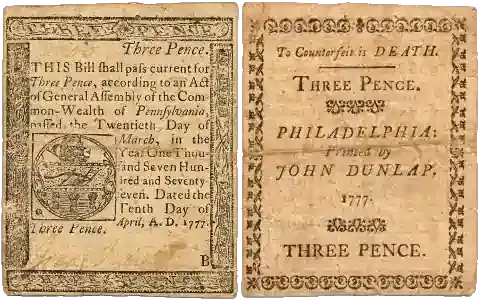And there you have it, folks! A whimsical journey through the history of colonial currency, where artistry, value fluctuations, and the battle against counterfeiters took center stage. It’s fascinating to reflect on how far we’ve come in terms of money management since those early days. So, the next time you’re gazing at your wallet, take a moment to appreciate the colorful bills in your possession and the absurdity of the past. After all, money may make the world go round, but a good laugh keeps us spinning happily on our way.
References:
British Museum. “American Currency: An Express Train through Time.”
History.com Editors. “How Counterfeiting Works.”
Newman, Eric P. “The Early Paper Money of America.”
U.S. Department of the Treasury. “Money in Colonial Times.”


